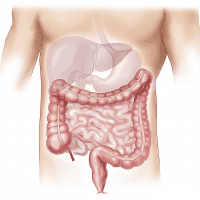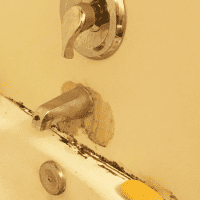- Mold Toxicity, Biotoxin Illness & CIRS
- Sick Building Syndrome and Mold
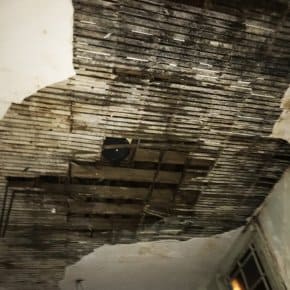
Sick Building Syndrome and Mold
Articles
- Biotoxin Illness
- Brain Fog
- Chronic Fatigue
- CIRS - Chronic Inflammatory Response Syndrome
- Digestive Issues
- Mold Toxicity
- Mycotoxin
- Sick Building Syndrome
- Skin Rashes/Disorders
Sick Building Syndrome and Mold
Sick Building Syndrome and Mold
Understanding Sick Building Syndrome: Causes, Symptoms, and Prevention
Sick Building Syndrome (SBS) is a term often used to describe a range of symptoms associated with spending an extended period of time in certain buildings, usually the workplace but can also occur inside the home. This condition is typically linked to poor indoor air quality in buildings.
Many buildings will often have had water damage at some point which may or may not be visible. The symptoms associated with Sick Building Syndrome can range from headaches, throat irritation, chronic fatigue, difficulty concentrating, skin irritations, respiratory problems and other mysterious symptoms making it very difficult to diagnose correctly.
Causes of Sick Building Syndrome
There are several causes of Sick Building Syndrome, but the most common cause is poor indoor air quality and inadequate ventilation. This can be due to a variety of factors including poor ventilation, the presence of chemical contaminants, volatile organic compounds (VOC) and biological contaminants such as mold and bacteria. Most large office buildings have experienced water damage which creates a hot spot for mold growth. These conditions can have significant effects on one's health and wellbeing.
According to an Environmental Protection Agency (EPA) study from 37 cities and 25 states, out of 100 randomly selected buildings [1]:
-
- 85% of buildings have had past water damage.
-
- 45% of buildings had ongoing issues with water leaks.
-
- 34% of buildings had current leaks in occupied spaces.
Sick Building Syndrome vs Chronic Inflammatory Response Syndrome (CIRS)
Mold certainly is a very common cause of building related illness which may be due to the fact that mold is not as well regulated and controlled compared to other toxic chemicals/materials like lead and asbestos. Sick building syndrome is an "umbrella term" for symptoms linked to being in a specific building or house. Since the symptoms often overlap with many chronic illnesses it can be difficult for many conventional physicians to pinpoint the underlying cause. When sick building syndrome is related to mold exposure it is important to understand the relation to chronic inflammatory response syndrome (CIRS) to be properly treated.
Functional Medicine, Integrative Medicine and Sick Building Syndrome
In Functional Medicine and Integrative Medicine the symptoms related to building related illness are often referred to as Mold Toxicity, Mold Illness or Biotoxin Illness which all usually fall under Chronic Inflammatory Response Syndrome (CIRS). When comparing the symptoms of sick building syndrome to the symptoms of Chronic Inflammatory Response Syndrome (CIRS) they are almost identical.
Unfortunately, once a diagnosis of an "incurable" chronic disease is presented many physicians will prescribe appropriate treatments to manage the symptoms of the chronic disease without addressing the underlying cause. Seeing health providers who will perform the proper testing and treatment for CIRS in relation to sick building syndrome can help get patients on the road to recovery.
When it comes to Sick Building Syndrome and more specifically Chronic Inflammatory Response Syndrome individuals are affected differently, and some aren't affected at all. The increased susceptibility to becoming sick can be linked to a genetic risk factor which affects 1 in 4 people. Some of these individuals will stay sick even after getting away from mold exposure which is why it is so important to obtain proper medical care as soon as possible.
Poor Indoor Air Quality and Sick Building Syndrome
The issue with mold and sick building syndrome is that it is sometimes very difficult to know where mold exposure is originating from. Toxic mold produces microscopic biotoxins called mycotoxins which are what cause people to become sick from mold exposure. Mycotoxins are what cause certain types of mold to be so toxic.
Mycotoxins are not living organisms and therefore spraying mold spray doesn't affect mycotoxins. Mycotoxins are so small that HEPA filters and most high-grade air filtration systems will not remove these mycotoxins from the indoor air.
Air Filters and Sick Building Syndrome
Most moderate to high quality filters for air pollutants are capable of removing mold spores from the air. However, when it comes to removing mycotoxins from the air, most common air filters are practically useless. Although removing mold spores from the air is highly beneficial in the office environment and home, again most air filters will not remove the mycotoxins and it's the mycotoxins which is what makes office workers and certain building occupants sick.
Sick Building Syndrome and Water Damaged Building Materials
When there is water damage inside a building, and the water damage is not properly taken care of quickly (usually within 24 hours) toxic mold can begin to grow. Once toxic mold growth begins to occur, the mold can start to produce mycotoxins. After toxic mold growth occurs and mycotoxins are present, even after the mold has been remedied the mycotoxins are usually still present.
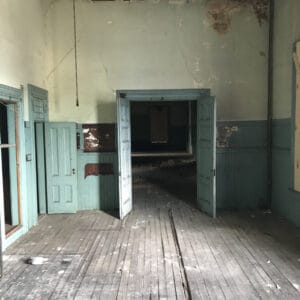
Mycotoxins vs Mold Spores
Mold Spores are usually what trigger people to have allergy symptoms due to their immune systems overreacting to mold spores if they are allergic to mold. Mycotoxins are responsible for the toxicity and serious health issues from mold. Reacting to mold spores as an allergy and being exposed to mycotoxins are both separate issues.
Unfortunately, mycotoxins can linger on any surface for months to years even if there is no mold or mold spores present. If there are mycotoxins present in the carpet and the carpet is vacuumed, the mycotoxins pass right through the vacuum filter as they are so small and become airborne.
If mycotoxins are still present and a mold test is performed to check for mold spores in the air- the mold test can come back perfect but building occupants and inhabitants will continue to be sick due to the mycotoxins still present.
Where to Find Mold in Buildings
It is important to contact a mold professional who is experienced with locating where mold is originating. Some areas where hidden mold is usually present is behind walls, above ceilings and underneath carpeting. Locating mold behind walls can be difficult especially if there is no visible damage from the outside. Water stained ceiling tiles or ceiling tiles that are discolored can also provide clues.
Mold can also be found in and around air conditioning systems especially if the HVAC system has ever froze up resulting with water leaking onto the floor and surrounding areas. If there is obvious discoloration of carpeting, mold can sometimes be found underneath the carpet. In old buildings, areas near steam radiators are also great spots for mold growth as these old units are prone to leaking over time.
Since mold can grow on all kinds of building materials it can be found almost anywhere which is why it is so important to be persistent in locating where the mold originates and having the issue addressed professionally and as soon as possible.
Musty Smells in Buildings
Musty smells are usually a sign that there is active mold growth which can help pinpoint the mold to a particular room. However, if the mold is dried out there is usually no smell. It is important to note when mold is dried out there are still mycotoxins and it is still toxic. Mold can be even more toxic once it is dried out because it becomes much easier for mold and mycotoxins to become air borne. Just because a water damaged area with mold has dried out does not make much of a difference when it comes to sick building syndrome.
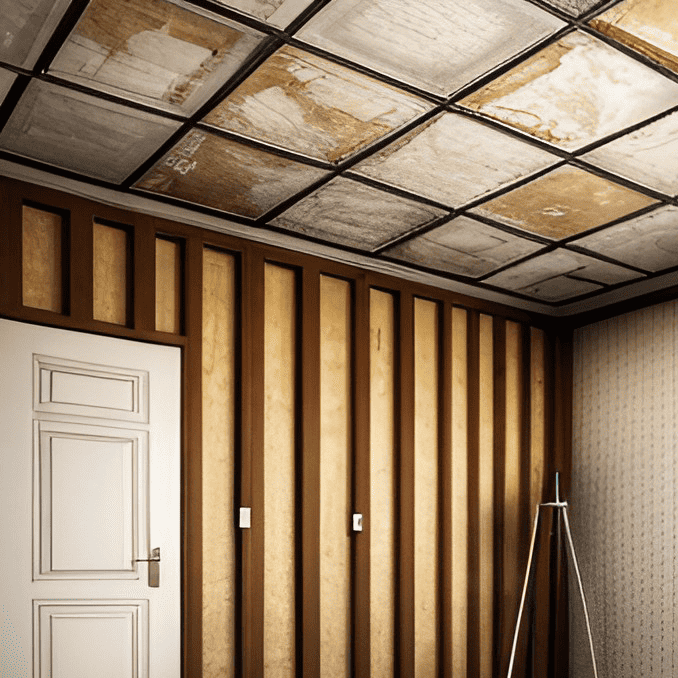
Symptoms of Sick Building Syndrome
Again, the symptoms of Sick Building Syndrome can vary greatly depending on the individual, but some of the most common ones include headaches, dizziness, fatigue, difficulty concentrating, and respiratory problems such as coughing and wheezing. Other symptoms may include skin irritations, eye irritations, and nausea. These symptoms can be temporary or long-term and can have a significant impact on an individual's quality of life.
How to Prevent Sick Building Syndrome
Preventing Sick Building Syndrome simply requires addressing the specific cause or causes of the issue. The first step in prevention is to ensure that the building is properly ventilated and that air quality and filtration systems are in place. Proper air quality and filtration systems will assist with keeping the mold spore count as low as possible. If water damage were to occur, proper remediation must take place ASAP.
Other prevention strategies may include controlling the indoor air quality and humidity levels, and if chemicals are an issue, using non-toxic cleaning products, and reducing the use of synthetic fragrances and air fresheners may also help. Regular cleaning and maintenance of HVAC systems like air conditioning and heating, as well as checking for mold sources if applicable, are also important to ensure indoor air quality is maintained, thus reducing the risk of Sick Building Syndrome.
If someone is having symptoms that seem to be attributed to the indoor environment, it is important to increase outdoor sources of fresh air to "dilute" the indoor air as much as possible.
Testing for Sick Building Syndrome
When testing for sick building syndrome it is important to have a health provider experiences with testing and treating chronic inflammatory response syndrome (CIRS) and mold illness. There are a multitude of tests and symptom assessments that can be done. Some common tests for chronic inflammatory response syndrome and mold illness are Mold Mycotoxin Testing, Organic Acids Testing, ADH/Osmolality, C3a, Complement C4a Plasma, Leptin, Matrix Metalloproteinase-9 (MMP-9), MSH - Melanocyte Stimulating Hormone, TGF Beta-1 - Transforming Growth Factor Beta-1, and Vascular Endothelial Growth Factor (VEGF). Genetic risk factors for CIRS can also be evaluated with HLA DR genetic testing.
Treatment for Sick Building Syndrome
Treating Sick Building Syndrome depends on the individual and severity of symptoms. The first step would be to get out of the building or house contributing to the symptoms. Again, bringing fresh air into the building or house will help dilute any toxins found in the indoor air which can temporarily help with indoor air quality. This allows the body an opportunity to recover. Depending on the individual and severity of symptoms, it is critical to getting properly evaluated and treated from the right doctor to prevent long term health consequences.
Sick Building Syndrome and Mold Summary
Sick Building Syndrome can have a significant impact on an individual's health and wellbeing, and preventing it requires vigilance in identifying and addressing its specific causes. Proper ventilation, maintenance of equipment, and limiting the use of synthetic fragrances, chemicals, and other potential irritants in indoor environments can go a long way in reducing the risk and symptoms of this condition.
Ultimately, the best way to treat Sick Building Syndrome is to prevent it from occurring in the first place by implementing effective prevention strategies. In many cases, if symptoms don't improve much after being out of a water damaged building it is critical to seek out a proper health provider experienced with testing and treating related illnesses like Chronic Inflammatory Response Syndrome (CIRS) to prevent long term symptoms and serious health issues.
Sources:
[1] Summarized Data of the Building Assessment Survey and Evaluation Study | US EPA
-
{{#owner}}
-
{{#url}}
{{#avatarSrc}}
{{name}} {{/url}} {{^url}} {{#avatar}} {{& avatar}} {{/avatar}} {{name}} {{/url}} - {{/owner}} {{#created}}
- {{created}} {{/created}}





